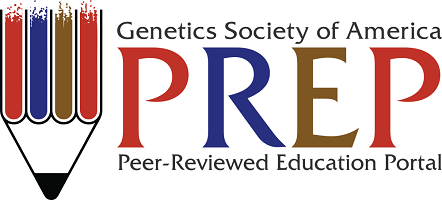Finals are over, grades are turned in, and winter break is finally here! For better or worse, however, many people use “breaks” to catch up on all the things that have stacked up during the fall. If your idea of relaxation includes thinking about your next course (after all, advanced preparation can be a big stress reliever), then here are some ideas for you courtesy of GSA’s genetics learning framework, the GSA Peer Reviewed Education Portal, and its affiliated partners.
Use the Force
In this case, “the Force” is high-quality, peer-reviewed teaching resources that you can use to plan out your next semester. GSA PREP has some new resources!
- Looking for a way to help your students understand genetics and development? A laboratory by Shipman and Dobens, Using Fijiwings to Understand the Genetic Control of Cell Growth and Proliferation: A Computer-Based Laboratory Exercise, conveys the core concepts of gene expression and regulation, and in particular how genes control development, using a computer-based program to measure the effect of manipulating cell signaling on tissue and cell size. The resource can be used as-is for an intermediate level undergraduate course, or can be modified to either accommodate introductory level students or advanced students.
-
A set of in-class exercises by Hood-Degrengier, Active Learning Workshops for Teaching Key Topics in Introductory Cell and Molecular Biology: Structure of DNA/RNA, Structure of Proteins, and Cell Division via Mitosis and Meiosis, consists of workshop materials that facilitate an active learning approach to teaching three core topics typically covered in introductory cell and molecular biology courses: DNA/RNA structure, protein structure, and cell division via both mitosis and meiosis.
Keep an eye out for other new resources in the beginning of 2016, there are several in the queue.
Yes, you can publish that, too!
If you have your spring semester all planned out, why not take some time in the lull of winter break and publish something great? (Or alternatively, settle down for a long winter’s nap, though that doesn’t look as nice on a CV).
Take some time to write up your classroom resources for GSA PREP or CourseSource, and give your student-centered learning materials a chance to shine. You’ll get something for your CV, and other educators will get a great idea to use in their classroom.
What’s the difference between GSA PREP and CourseSource? Both are based on the same learning framework (note: the CourseSource webpage may not be updated); both request submissions of resources that use evidence-based, effective teaching methods. Indeed, most resources published in one will be cross-posted in the other. CourseSource is an online, open access journal that publishes five types of articles; lessons must be written with such detail that educators should be able to replicate the activity exactly. GSA PREP is an online repository of resources, offering a DOI; unlike CourseSource, it is not a journal, and thus resources are not articles nor are they indexed in PubMed. The format of GSA PREP materials is more informal, requiring only a resource justification; otherwise, teaching materials may be submitted “as-is.”
Sharing is Caring
Bask in the glow of new year celebrations and give back to the education community by suggesting online resources for cataloging in GSA PREP. (This process will also help you procrastinate while you are writing up your own original resource for submission!) If you regularly use a resource in your class and think that everyone should do the same, suggest it via this form. This can include anything from videos, to presentation slides, to full teaching modules. Note that filling out the suggestion form is not a guarantee that the resource will be listed.













